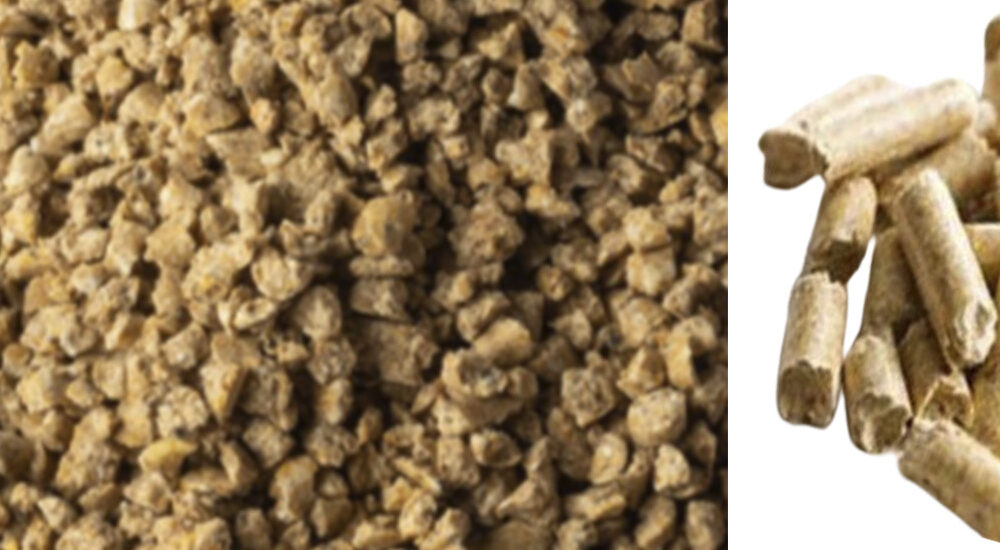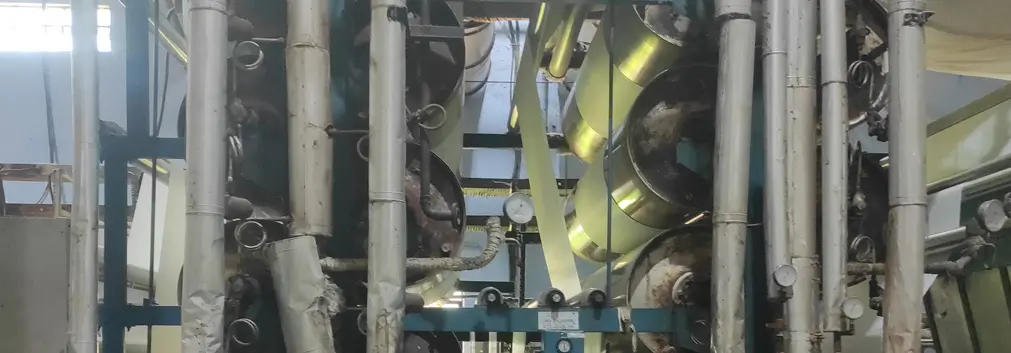
Plastic Lubricants from BECHEM
March 11, 2020
Can water based cleaners remove rigid dirt and contaminants?
July 28, 2020Berutox FB 22 to the rescue of high speed bearings
BECHEM Synthetic high speed spindle bearing grease to the rescue of high speed bearings.
The bearing failures resulted in undesired production downtime and a constant worry to the Maintenance Department.
Problem description
Premature failure of high speed bearings installed at the dryer section of paper machine were a regular phenomenon at an integrated paper plant. The bearing failures resulted in undesired production downtime and a constant worry to the Maintenance Department. High temperatures averaging about 90°C to 100°C was recorded at these bearings. While high process temperature was suspected initially , the temperature difference between the shaft and plummer block did not support the theory. It was dire situation for the Maintenance team.
Background
Set up by India’s reputed Corporate house with established businesses in various sectors, the modern paper manufacturing plant is credited as country’s largest integrated paper unit. The plant with advanced machinery, manufactures fine paper, paper boards for packaging and graphic solutions and helps the company in maintaining the leadership position in Indian fine paper market and value added paperboard segments.
The integrated paper unit has the complete set up from debarking and wood chipping to pulping and refining sections to the final process output at the paper machine. At the paper machine, stock from the pulping process is woven to continuous paper, stretched into paper film, pressed, dried and finally rolled into bales.
During a regular prospecting visit by the Bechem Application Engineering team to the unit, the Plant Head expressed his concern regarding repeated premature bearing failures fans at the dryer fan section of a paper machine. The maintenance team had the understanding that heat transfer from the ‘hot air blowing’ over the shaft could be the reason for abnormal temperature rise in the bearing and thereby its failure. The Bechem team however suspected that the issue could be related to inadequate lubrication and requested the Plant head for a lubrication audit of the dryer section. Having received the approval, the Bechem team methodically studied and arrived at the conclusion that ‘inadequate lubrication’ indeed was the primary reason for bearing failures.
BECHEM’s Approach
The team initially monitored and recorded temperatures of bearings at both, drive end (DE) and non drive end (NDE) of motors in about eight applications. The spherical roller bearings included that of the heater and hot air blower fans, drier and recirculation fans, pre coat supply fan, post size press fan as well as vacuum fans. Temperature readings of bearings that noted higher temperature consistently are given below for reference.
| Sl. No | Name of the Fan | DE Temperature (°C) | NDE Temperature (°C) |
| 1 | IR drier air recirculation fan | 71.2 | 89.9 |
| 2 | Fan No. 15 | 63 | 120.6 |
| 3 | Pre coat supply fan | 70 | 95 |
| 4 | Back coat air heater | 64 | 75 |
| 5 | Post size press fan | 67 | 77 |
| 6 | Vacuum fan – 1 | 120 | 75 |
| 7 | Vacuum fan – 2 | 119 | 118 |
| 8 | Vacuum fan – 3 | 55 | 119 |
Temperature measured near the fan housing did not cross 65 °C probably due to the thermal insulation provided, however the bearings operating in the plummer block recorded much higher temperatures.
Detailed study of the applications revealed that the abnormal temperature rise in the plummer block bearings was majorly due to lubrication failure.
Minimum base oil viscosity of the grease : The practice of the Maintenance team was to re-lubricate the high speed bearings with a PTFE based grease every 7 days with a quantity of 150-200 g. The Bechem personnel though, observed oil bleeding out of the bearings seals in most of the sections during operation. Taking cue, the Bechem team based on the bearing type and diameter worked out the minimum base oil viscosity of the grease required to meet lubrication requirements of the bearing.
The calculations showed the base oil viscosity requirement at 15 Cst to 46 Cst for various fan bearings involved in the drier section .
Maximum speed : During regular operation, RPM of the fans varied due to the variable frequency drives. However during interaction with the Maintenance team it was noted that the maximum speed was about 2870 RPM for bearings. Subsequently D*N factor for each of the bearing was calculated to arrive at the quantity of grease required,
DN Value can be calculated using below given formula
D*N = Ka * n * dm
| Where dm = | average bearing diameter = (D+d)/2 ( D = Outer Diameter in mm | (d) = Inner Diameter in mm ) |
| n = | Bearing speed in RPM |
| Ka = | 1 for DGBB, ACBB, four-point contact bearing, SABB, CRB thrust ball bearing |
| = | 2 for SRB, TRB needle roller bearing |
| = | 3 for axially loaded CRB, full complement CRB |
SRB : Spherical roller bearing,
TRB : Taper roller bearing,
DGBB : Deep grove ball bearing,
ACBB : Angular contact ball bearing,
CRB : Cylindrical roller bearing,
SABB : Self aligning ball bearing
| Sl. No | Bearing | RPM | D * N factor |
| 1 | Type A | 2870 | 602700 |
| 2 | Type B | 2870 | 789250 |
| 3 | Type C | 2870 | 287000 |
| 4 | Type D | 2870 | 337225 |
Based on calculations and using Bechem’s proprietary grease selection methodolgy, the team recommended high speed grease Berutox FB 22 spindle bearing grease, with the following characteristics,
- Special synthetic oil and barium complex thickener for long term performance
a. Base oil viscosity of 50 Cst at 40°C, this single grease would meet the requirements of all the fan bearings involved
- Regular operating temperature range of +180°C with short term peak of + 200°C
- High speed bearing grease with D*N factor of 8,00,000
- Excellent temperature consistency behaviour to ensure minimal oil bleeding from the bearing
- Very good corrosion protection for bearings operating under humid and chemical environments
Lubrication quantity: Considering the bearing types, application and recommended grease, Bechem’s in house lubrication procedure recommended an average quantity of 42 g. per bearing instead of the earlier maintenance practice of 150-200 g.
The final countdown:
Based on the comprehensive report submitted to the Plant Head, an opportunity was provided to prove Berutox FB 22’s performance in one of the critical fan bearings . Having thoroughly cleaned the bearings, an exact quantity of 42 g was measured and manually applied on bearings at both ,drive and non drive ends. The trial lasted for 15 days with the temperature being measured for every 3 hours.
| Day | Earlier grease, Quantity : 200 g, re-lubricated every 7 days Temp in °C | Berutox FB 2, Quantity : 42 g, re-lubricated every 30 days Temp in °C | ||
| NDE | DE | NDE | DE | |
| Day 1 | 99 | 68 | 58 | 58 |
| Day 2 | 102 | 97 | 58 | 50 |
| Day 3 | 94 | 56 | 54 | 48 |
| Day 4 | 102 | 98 | 62 | 53 |
| Day 5 | 102 | 66 | 50 | 45 |
| Day 6 | 101 | 65 | 51 | 45 |
| Day 7 | 102 | 66 | 53 | 45 |
| Day 8 | 52 | 46 | ||
| Day 9 | 51 | 46 | ||
| Day 10 | 51 | 45 | ||
| Day 11 | 67 | 60 | ||
| Day 12 | 51 | 45 | ||
| Day 13 | 51 | 45 | ||
| Day 14 | 57 | 50 | ||
| Day 15 | 58 | 51 | ||
Apart from the reduction in bearing temperatures, no bleeding of oil was observed during the trial period. As expected, no bearing failures was reported
Result : Advantage Berutox FB 22 – Synthetic high speed spindle bearing grease.
- Using Berutox FB 22, Customer experienced reduction of 25-30°C in bearing temperatures
- Lubrication interval increased from 7 to 30 days. No bearing failure has been reported at the plant in drier section for almost 18 months after shifting to Berutox FB 22 spindle bearing grease
- No production downtime due to bearing failures. Currently all high speed spindle bearings in the drier section of the paper machine run with Berutox FB 22 high speed spindle bearing grease




